आगरा

Home of the Taj Mahal

When asked “where is the Taj Mahal”, anyone will be able to tell you that it’s in India, but the name of the actual city it dominates is perhaps less commonly known. Agra lies downstream of Delhi on the Yamuna River, and is the site of that world-famous mausoleum. It was the capital of the Mughal Empire at various times throughout the 16th and 17th centuries (occasionally swapping with Delhi), and was the most important city in the subcontinent under the rule of Shah Jahan in the mid-1600s.
We travelled on India’s fastest train to Agra, leaving New Delhi before dawn and trundling down in around two hours, compared to the four or five it would take to drive. We only spent a day in the city, but that was sufficient to see the Taj Mahal, Agra Fort and the nearby ghost city of Fatehpur Sikri. A bit whistlestop, I’ll admit, but after ticking off the biggest attractions we were happy not to hang around.

The Taj Mahal itself was significantly more impressive than I had expected. Its scale and intricacy, not to mention its excellent condition, belie its four-century history. The reflecting ponds were unfortunately mostly dry during our December visit, but I managed to get a reasonable shot by lying on the ground and holding my camera just above the water.
A closer view of the Taj Mahal in the glow of the morning sun. Its purpose is as a mausoleum, commissioned by Shah Jahan, the Mughal Emperor at the zenith of its existence, for his wife Mumtaz Mahal. She died in childbirth in 1631, and the Taj Mahal itself was completed in a relatively short twelve years, with surrounding buildings requiring another decade or so. Shah Jahan himself was also later entombed within.
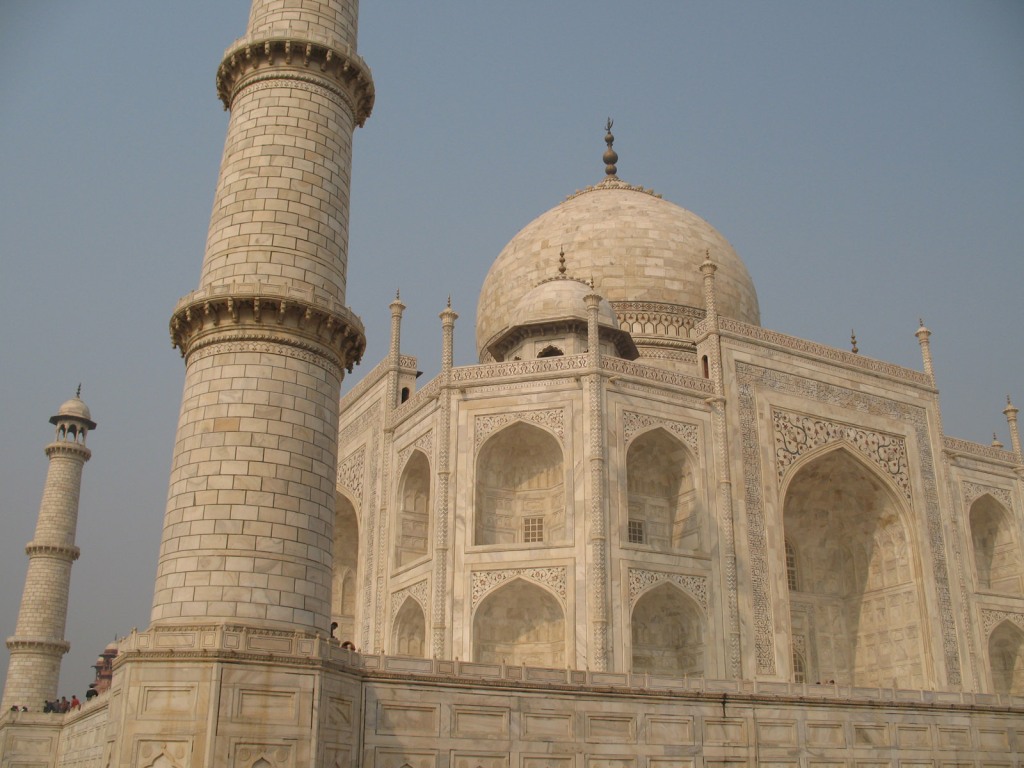
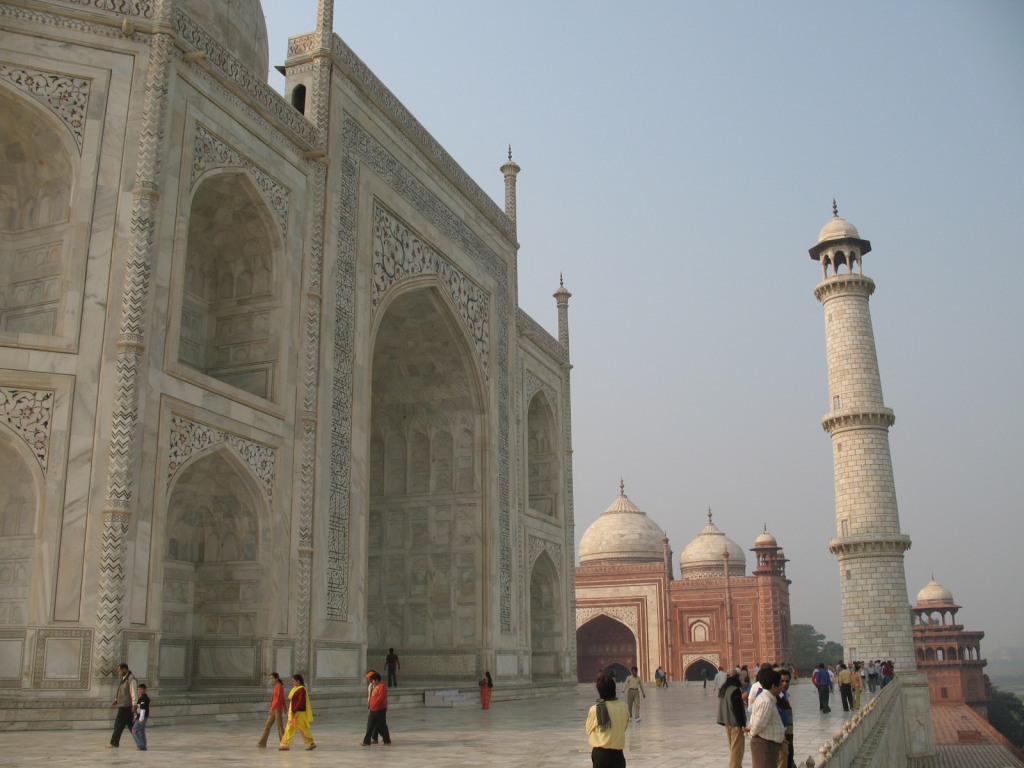
Around the back of the Taj Mahal. Each of the four minarets was built at a slight incline away from the main building, so that if there was an earthquake they would fall outwards, to mitigate overall damage.
Some of the stones used to make the patterns on the wall catch the light and shine brightly. The same techniques as used on the Taj Mahal are used to make stone tables for tourists in workshops surrounding the site.
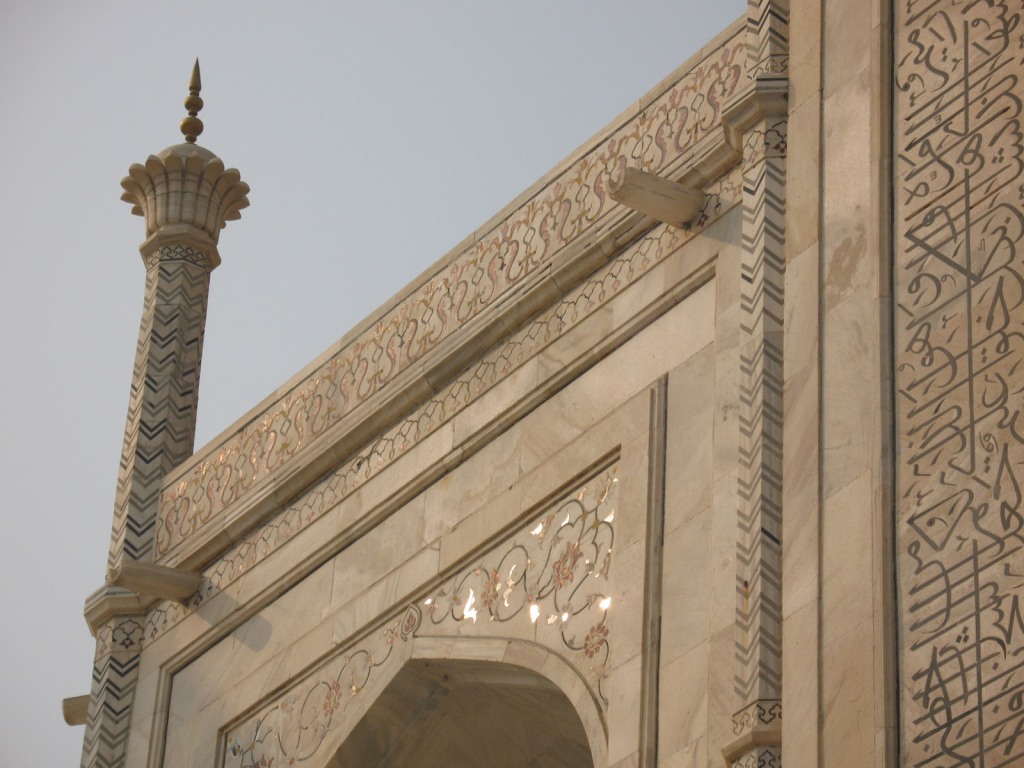

I was surprised by how big the Taj Mahal is, as can be seen in this photo of one of the vaulted recesses. The tip of the dome stands 73 metres above the surrounding gardens.
This bloke kept his child amused with a balancing act – a unique way to view the Taj Mahal. Note that all visitors were required to remove their shoes.
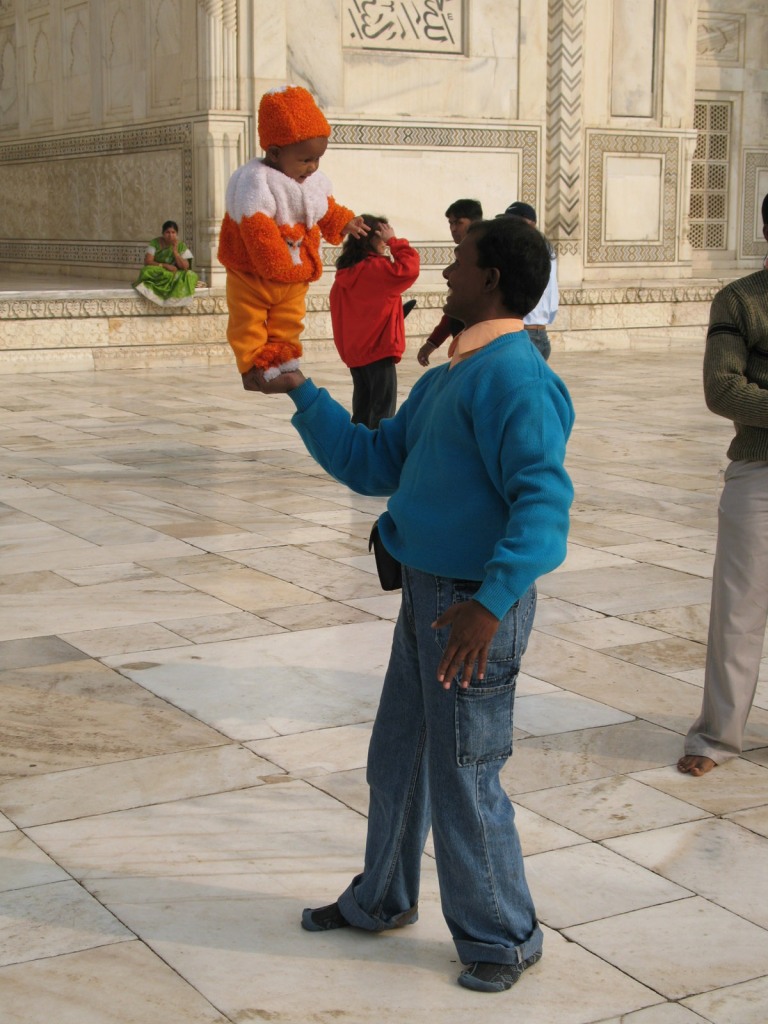
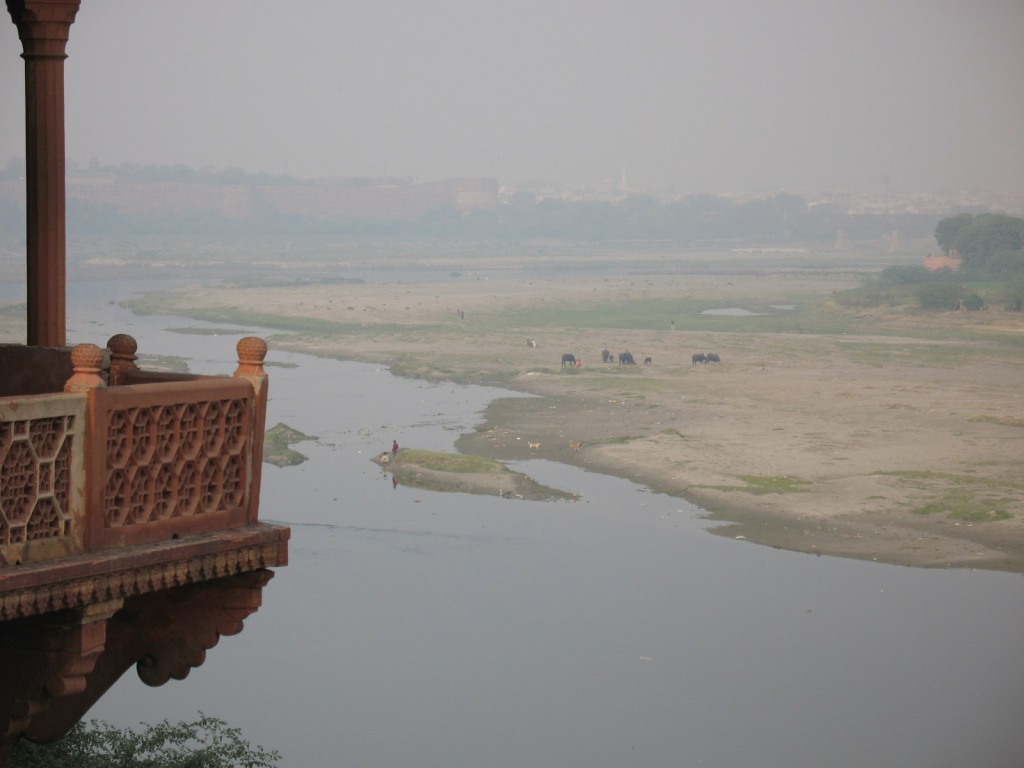
The Yamuna River flows past the back of the Taj Mahal on its way to meet the Ganges, and had all but dried up during our visit. There were a few cows roaming around, and through the haze the red walls of Agra Fort were visible in the distance.
The Taj Mahal sits on a square based podium, and looks almost identical from each side. It was named one of the new Seven Wonders of the World in the early 21st century, together with Chichen Itza in Mexico, Christ the Redeemer in Brazil, the Colosseum, the Great Wall of China, Machu Picchu, and Petra.

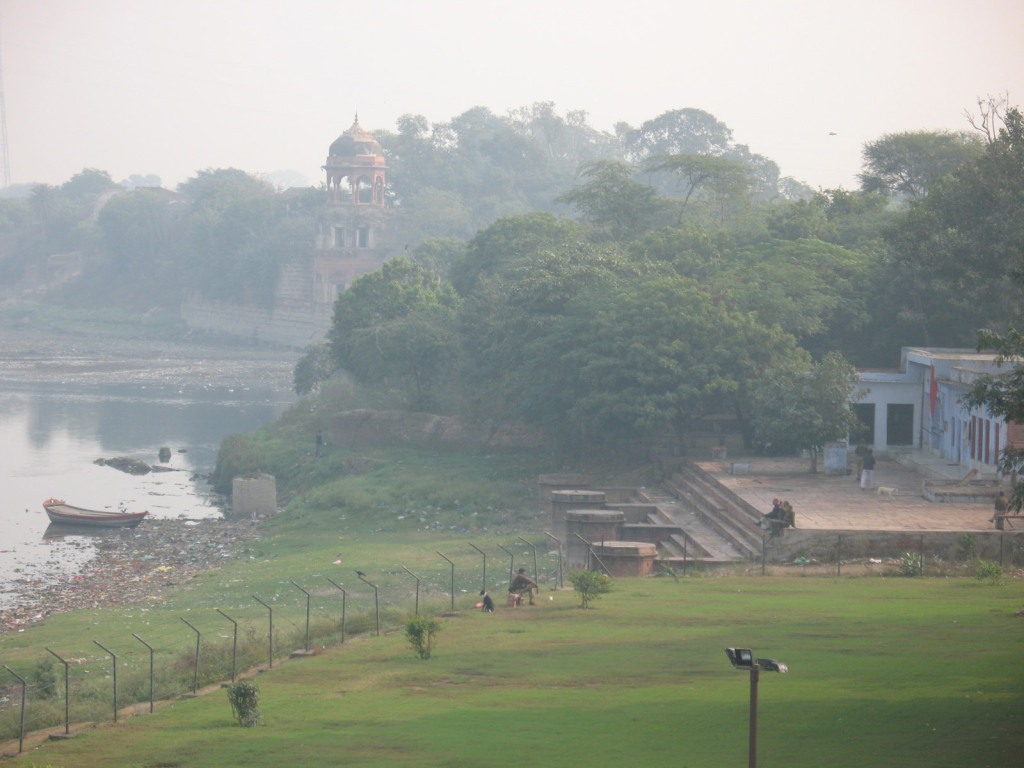
Looking down the Yamuna River from the back of the Taj Mahal, towards Agha Khan Haveli, a popular viewing point without the entry fee.
The main gateway or darwaza of the Taj Mahal, with its twenty-two small domes as seen from the podium of the tomb itself. The famous Princess Diana bench is in there somewhere.


The classic view of the Taj Mahal, as seen from the gatehouse upon entry. The name Taj Mahal translates as Crown Palace.
A last glance through the gateway, with the tiny little people walking around the base of the building giving a great indication of its scale.
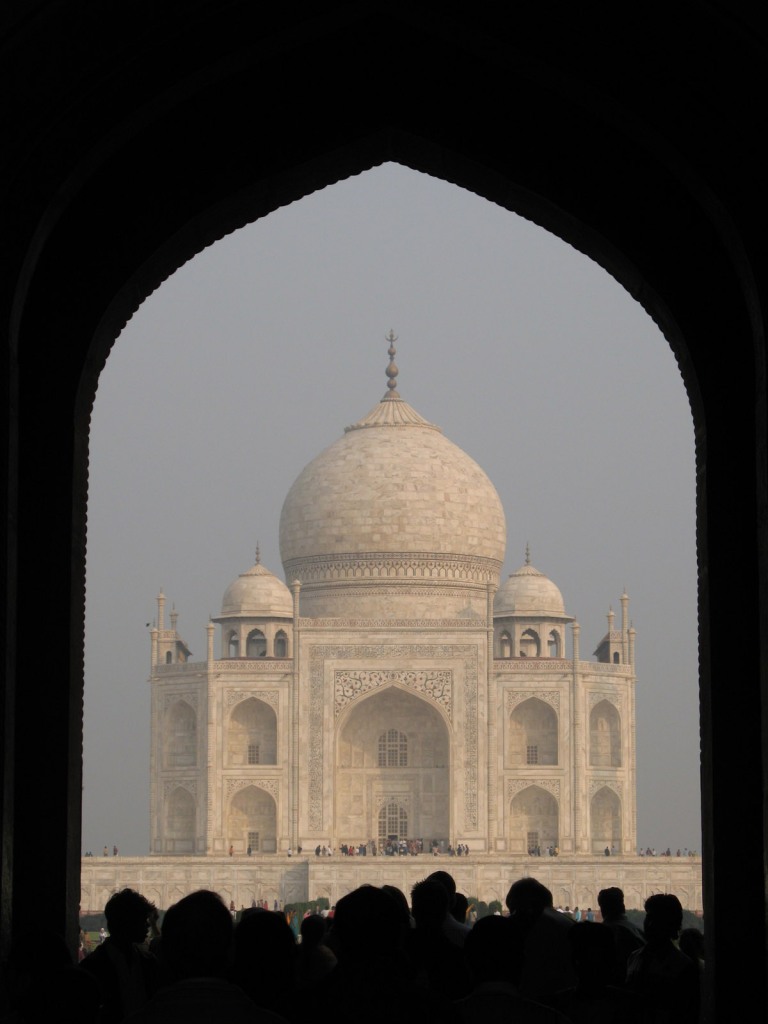
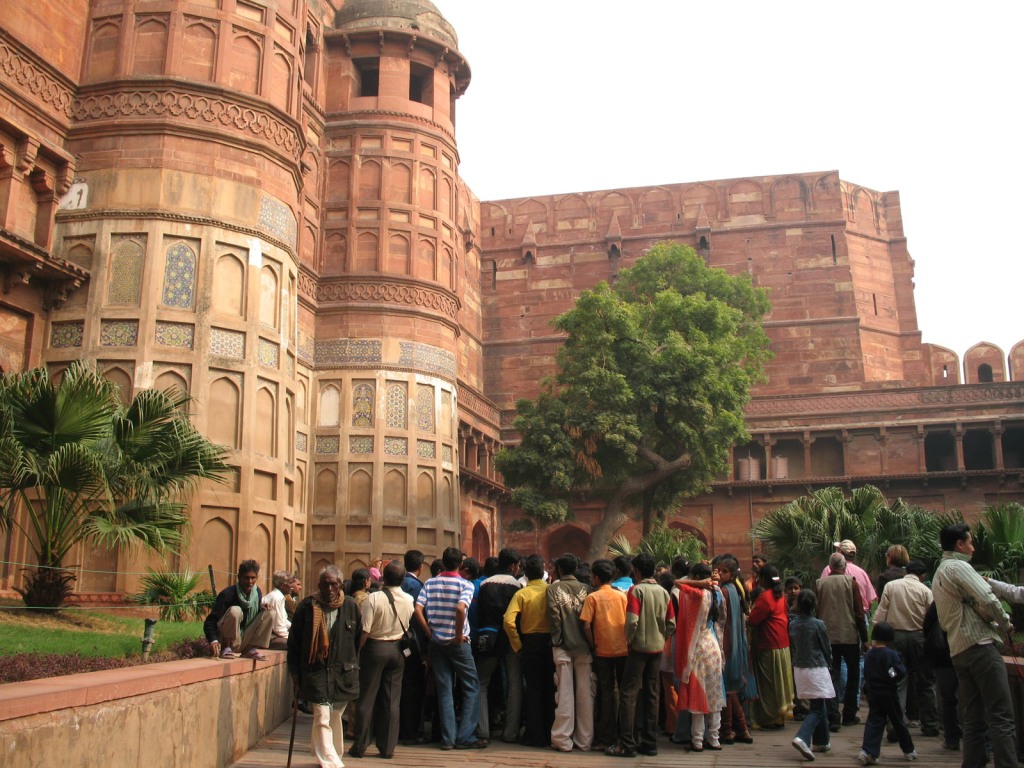
We headed back out into Agra city to the next major attraction, Agra Fort. Entry was by Amar Singh Gate as seen here crowded out by tourists. The fort was founded in the early 16th century and served as the seat of the Mughal Empire for various periods over the next two centuries.
Local resident monkeys scampered around the walls of Agra Fort. They are not to be tangled with.
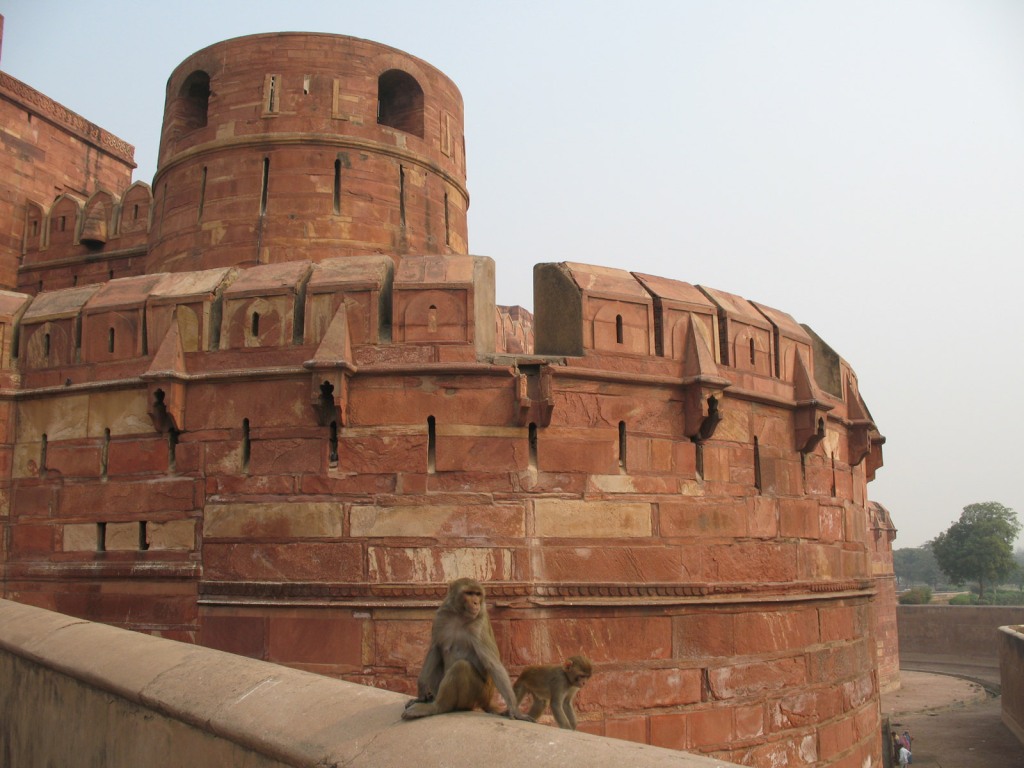
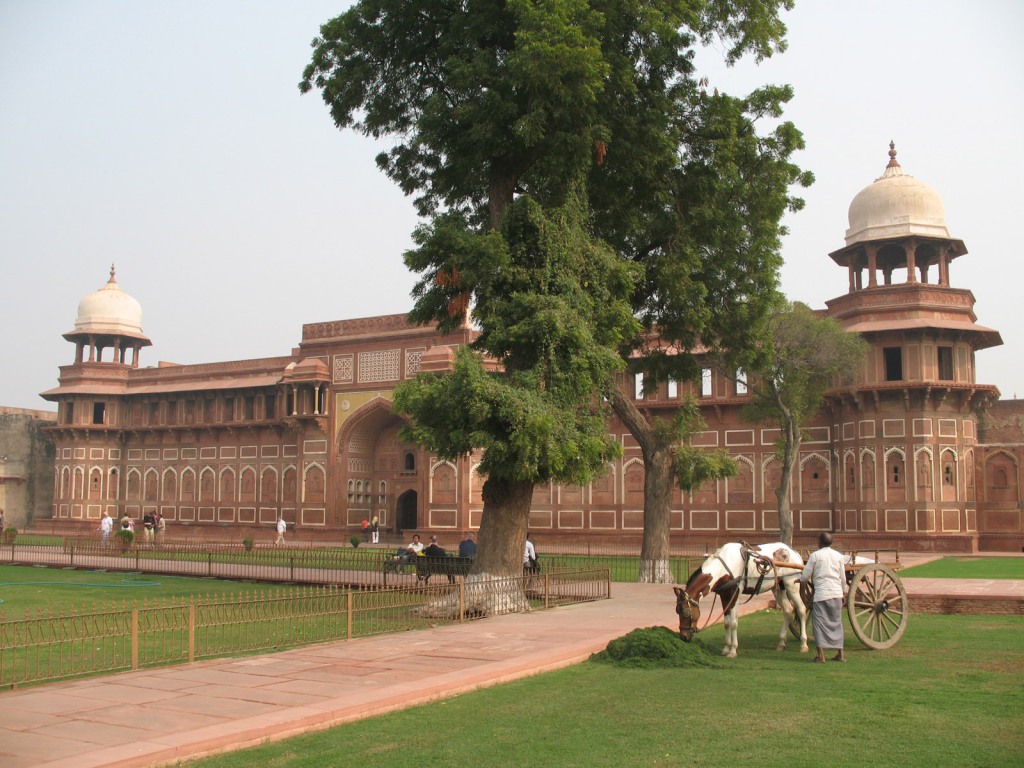
Jahangiri Mahal was the zenana or harem, the residence of the wives of Akbar, the third Mughal emperor. To this day, the lawns are manicured in the pristine condition he would have expected back in the 16th century, I have no doubt.
There were a lot of chipmunks going around the place, some of the braver ones would eat seeds from your hand.
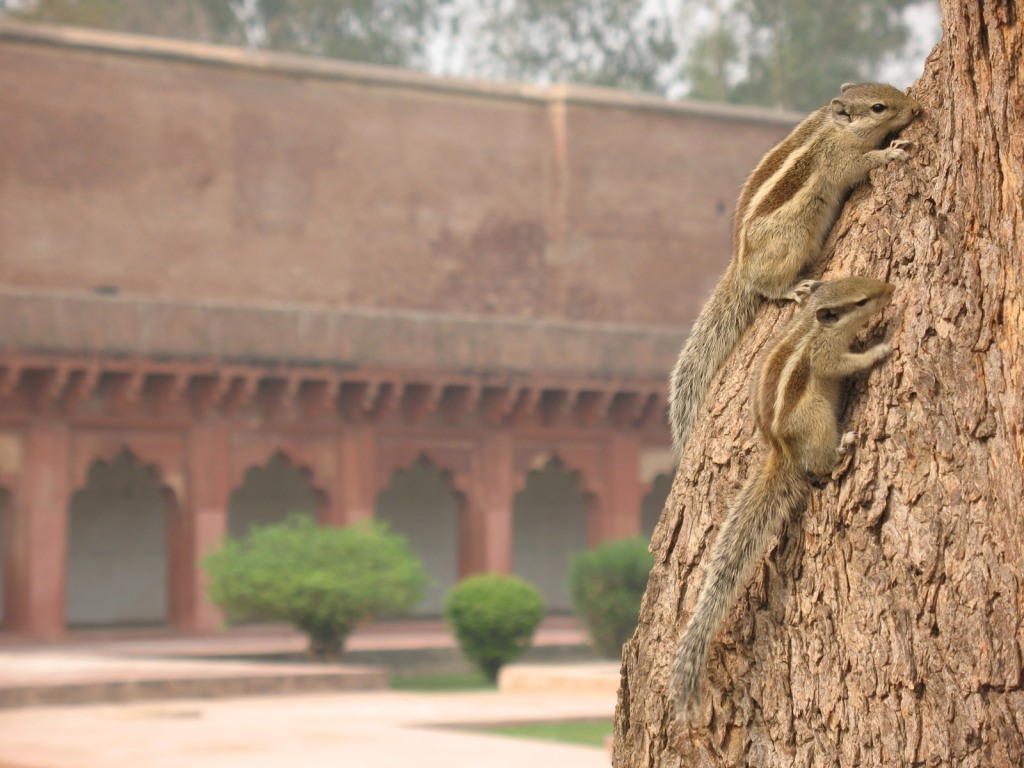
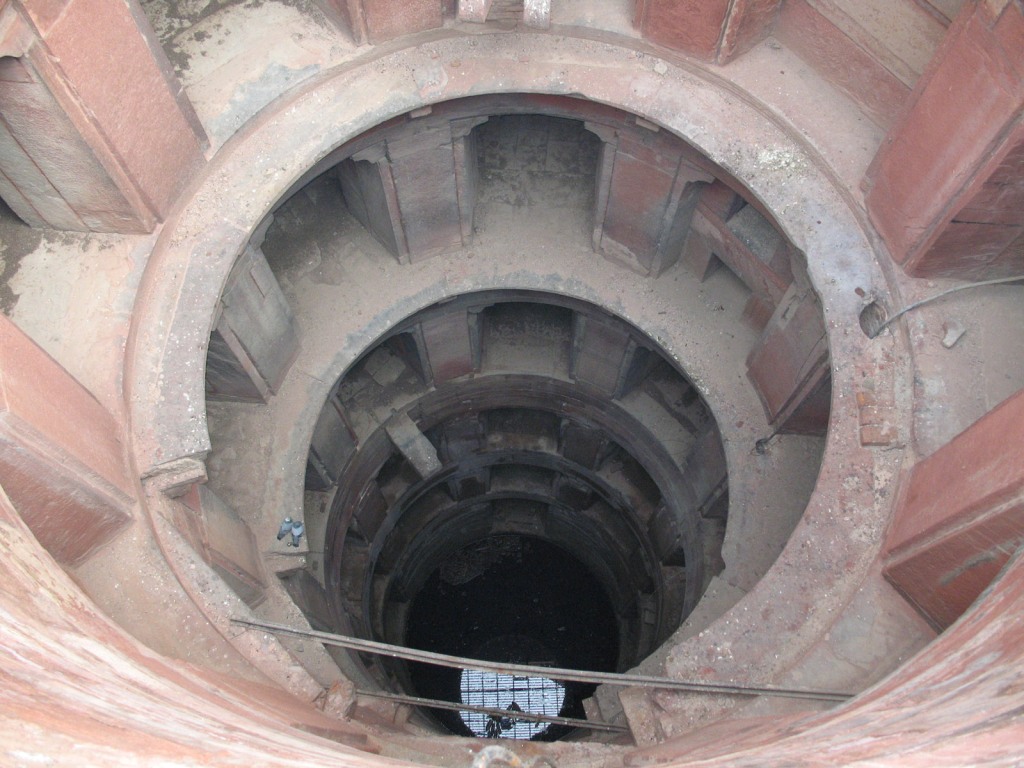
A scarily-deep well was a surprise discovery in the southeast corner of the fort, dropping below grade by at least six storeys in a Prince of Persia-style pit. I took this photo through the protective grating preventing unwanted swimmers from accessing the precious water below. While not strictly a stepwell, I’d really like to know how to get into the tunnels and properly explore it.
The local pollution does its best to thwart views of the Taj Mahal from Agra Fort, but you can just see it through the haze behind the trickle of the river. If you don’t believe me, look closer!
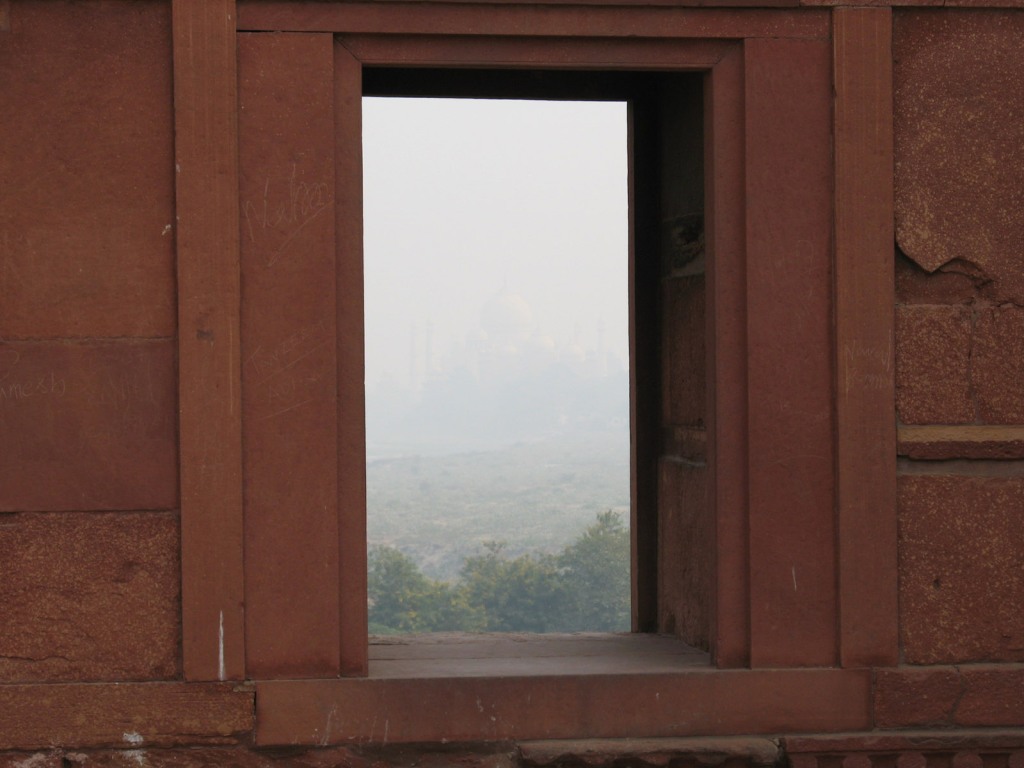
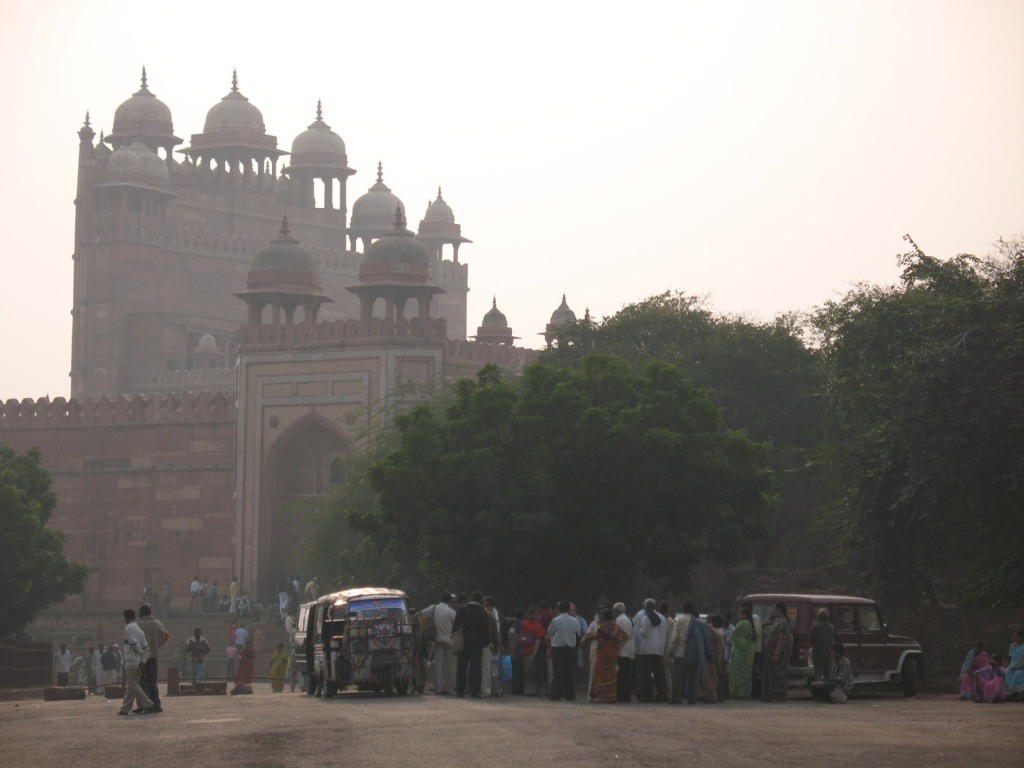
On to our next World Heritage Site, Fatehpur Sikri, the “City of Victory” on the route to Jaipur. The entrance is dominated by its own Jama Masjid, or central mosque, a very impressive looking place which I wish I’d walked around to see the front of properly.
Fatehpur Sikri was founded by Akbar I as a purpose-built Mughal Empire capital in 1571. This five-tiered building is the Panch Mahal windcatcher tower. It originally had screens between the columns on the upper levels for privacy. The colour and feel of the place reminded me of “Prince of Persia 2”.
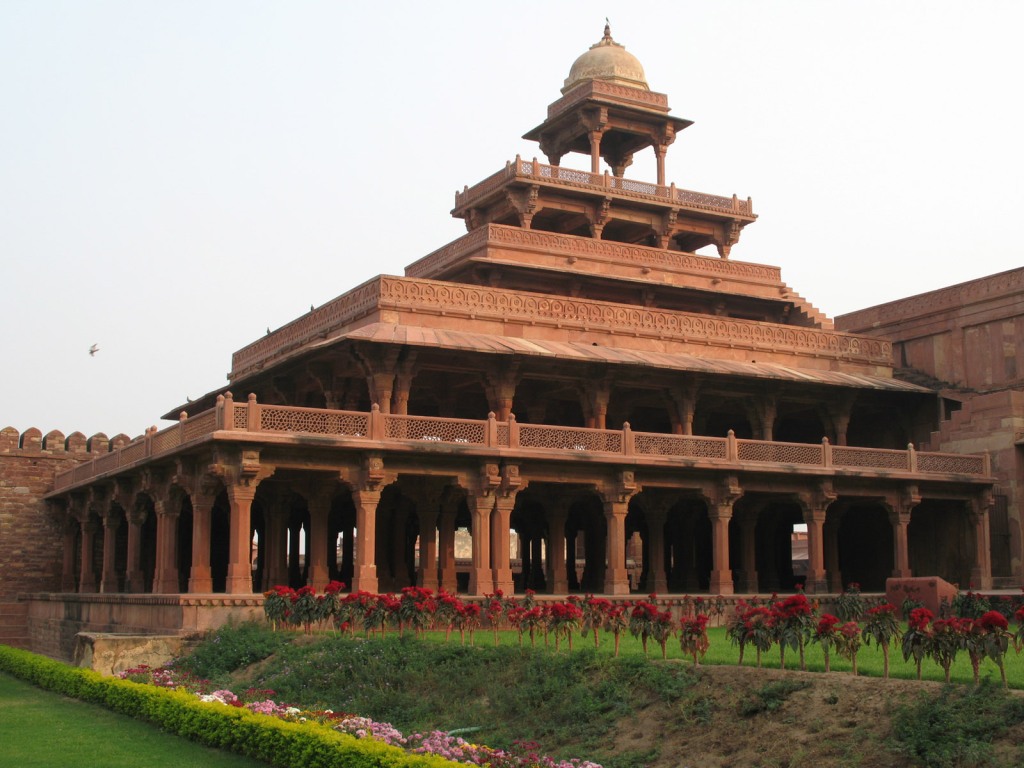

A long corridor of Akbar’s Stables, elsewhere within Fatehpur Sikri. The stone rings were presumably for tying up horses. It is often described as a ghost city, as it was only occupied for around fifteen years before being abandoned, ostensibly due to water shortages.
There was however still some unsavoury-looking water at the bottom of this step well. Its green gunge surface didn’t stop some of the local lads from leaping in for the entertainment of the tourists.


Detail of the intricately carved red sandstone walls of Birbal’s Palace, within the grounds of Fatehpur Sikri. The city walls themselves originally had a perimeter of five miles.
Akbar’s Harem features a smaller ornamental pond and other pavilion-type buildings. These are the Audience Chambers – performances were carried out on the island.
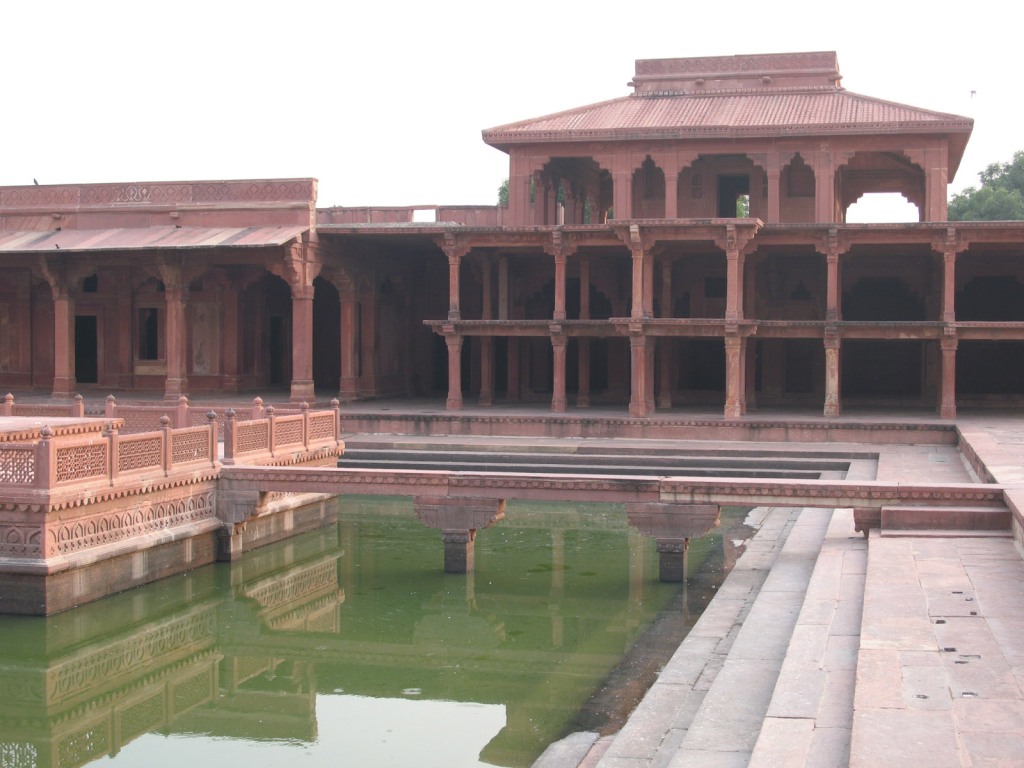

The red sun sets over the red ghost city, and we got back on the road heading for Rajasthan and Jaipur.
Created 2008 | Updated 2023
